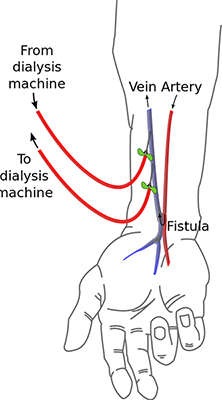- Chronic kidney disease(CKD) is now the 6th largest cause of death worldwide.
- Even though kidney transplantation is considered the best renal replacement therapy, developing countries like India still depends predominantly on Dialysis as the main mode of treatment modality.
- Dialysis is a procedure initiated on patients whose kidneys no longer function to meet the metabolic requirements of the human body.
- Dialysis ensures removal of nitrogenous waste products and other toxic substances that accumulate in human body when the kidneys fail to function properly.
CKD is a condition where there is irreversible loss of function of the kidneys. Glomerular filtration rate (GFR) less than 15 ml/min is considered as CKD stage 5 where about 85-90% of kidney function is lost. In that case you have to start dialysis if medical treatment no longer works.
Dialysis helps to keep the body in balance and avoid death secondary to kidney failure by many mechanisms.
- Remove excess water from the body
- Remove excess waste products accumulated in the body
- Check excess levels of certain chemicals in the body like Potassium, Bicarbonate etc.
- Helps to maintain normal levels of certain chemicals like Calcium, Phosphorus, Uric acid etc.
- Helps in control of Blood pressure.
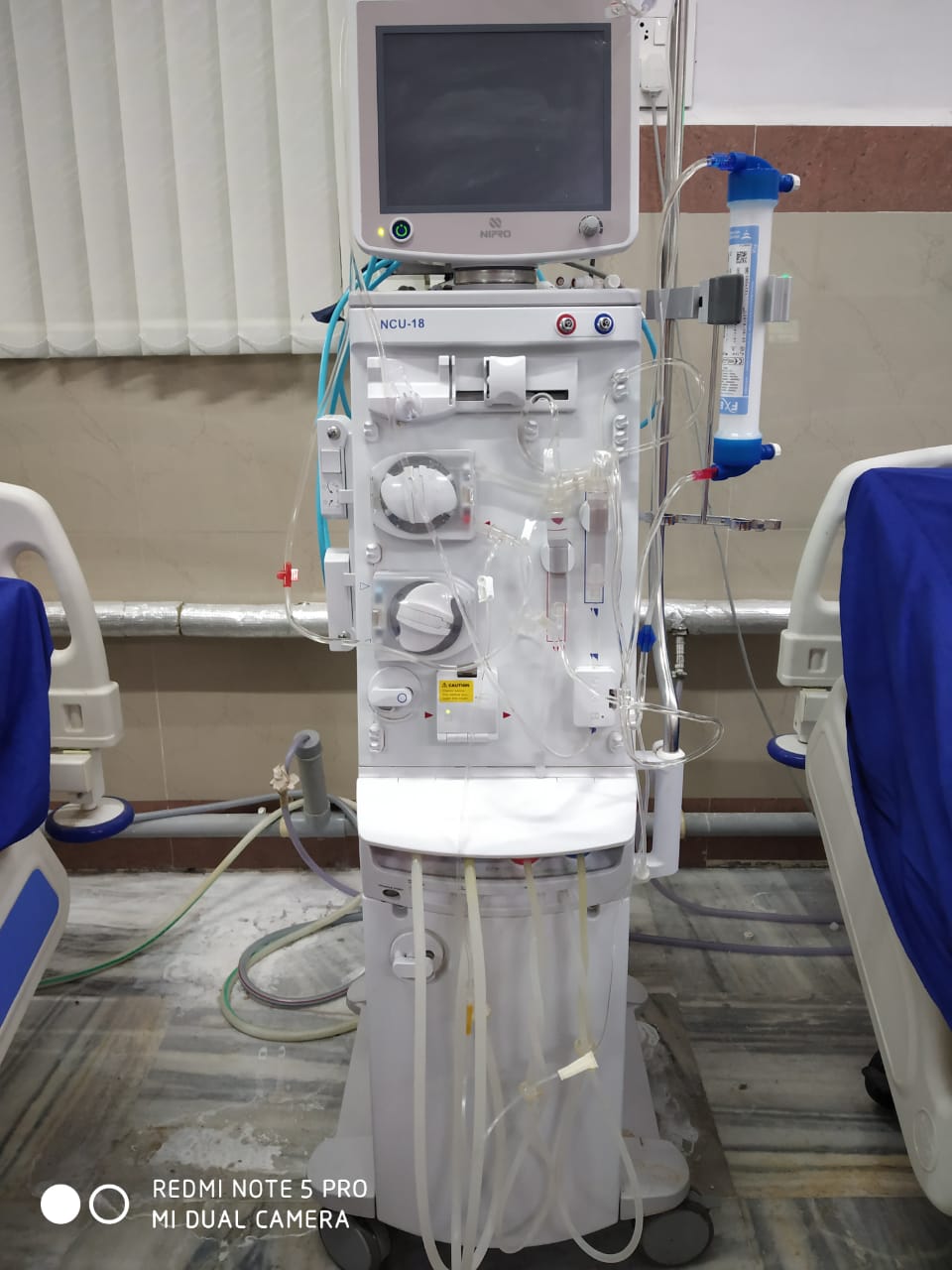
There are mainly two different modalities of Dialysis
- Hemodialysis
- Peritoneal dialysis
Hemodialysis (HD):
- Hemodialysis is a procedure where blood is passed through a machine with artificial kidney (hemodialyzer) for removal of waste products and purified blood is returned to the patient.
- It is done in hospital or in dialysis centres.
- Patient’s blood should be drawn and pumped into the machine. For drawing blood, an access is needed which may be temporary or permanent.
- Tempory access is made by putting a tube (Catheter) into the neck veins or thigh veins.
- For permanent access, minor surgery is needed where either a fistula is created beneath the skin over arm or forearm, or a graft is placed. Fistula is an access made by joining artey to vein beneath the skin and graft is a connection made between artery and vein by means of artificial plastic tube.
- After an access is created, patient will be connected to dialysis machine, blood is taken out and pumped in to the machine, passes through artificial kidney (hemodialyzer), waste products and excess water is removed and purified blood is pumped back to the patient.
- Usually hemodialysis is done every alternate days ( thrice weekly) but in special circumstances, daily dialysis or even continuous dialysis may be done.
- Usual duration of each session is 4 hours, but it may vary based on the clinical condition.
Peritoneal dialysis (PD):
- Peritoneal dialysis is another type of dialysis where a tube (catheter) is inserted into the abdominal cavity and uses lining of cavity (peritoneum) for removal of waste products from blood.
- Cleansing fluid (dialysate) is circulated through the tube into the abdominal cavity and removed after a dwell time. Thus cleansing fluid extracts waste products from blood vessels in peritoneum and drawn out of the body which is later discarded.
- There are two different types of Peritoneal dialysis - Continuous ambulatory peritoneal dialysis (CAPD) and Automated peritoneal dialysis (APD).
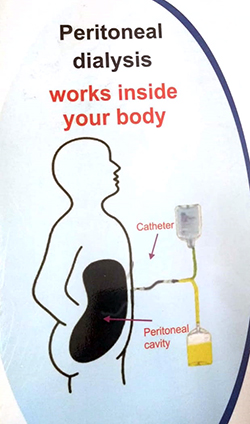
CAPD :
- This is the only dialysis modality which is done without the help of a machine. You can do entire dialysis by yourself at home.
- Cleansing fluid (dialysate) is commercially available in bags of different strengths (2L, 5L etc.).
- You have to connect this bag to tube which is inserted in your abdomen, keep it inside for few hours and later can be removed and discarded. This is known as exchange.
- The main advantage is that you can do all your routine activities while fluid is inside your abdominal cavity.
- The main disadvantage is increased risk of infections if not done in clean surroundings and with aseptic precautions.
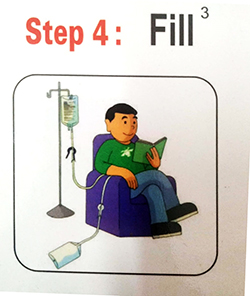
APD:
- This is different type of peritoneal dialysis and can be done at home, but with the help of a machine called Cycler.
- Mechanism is almost similar to CAPD, but exchanges are not done manually, but in a predetermined manner adjusted by Cycler.
- Another difference is number of exchanges are more and usually done at night. After connecting to Cycler, you can go to sleep and the Cycler will take care of Dialysis.
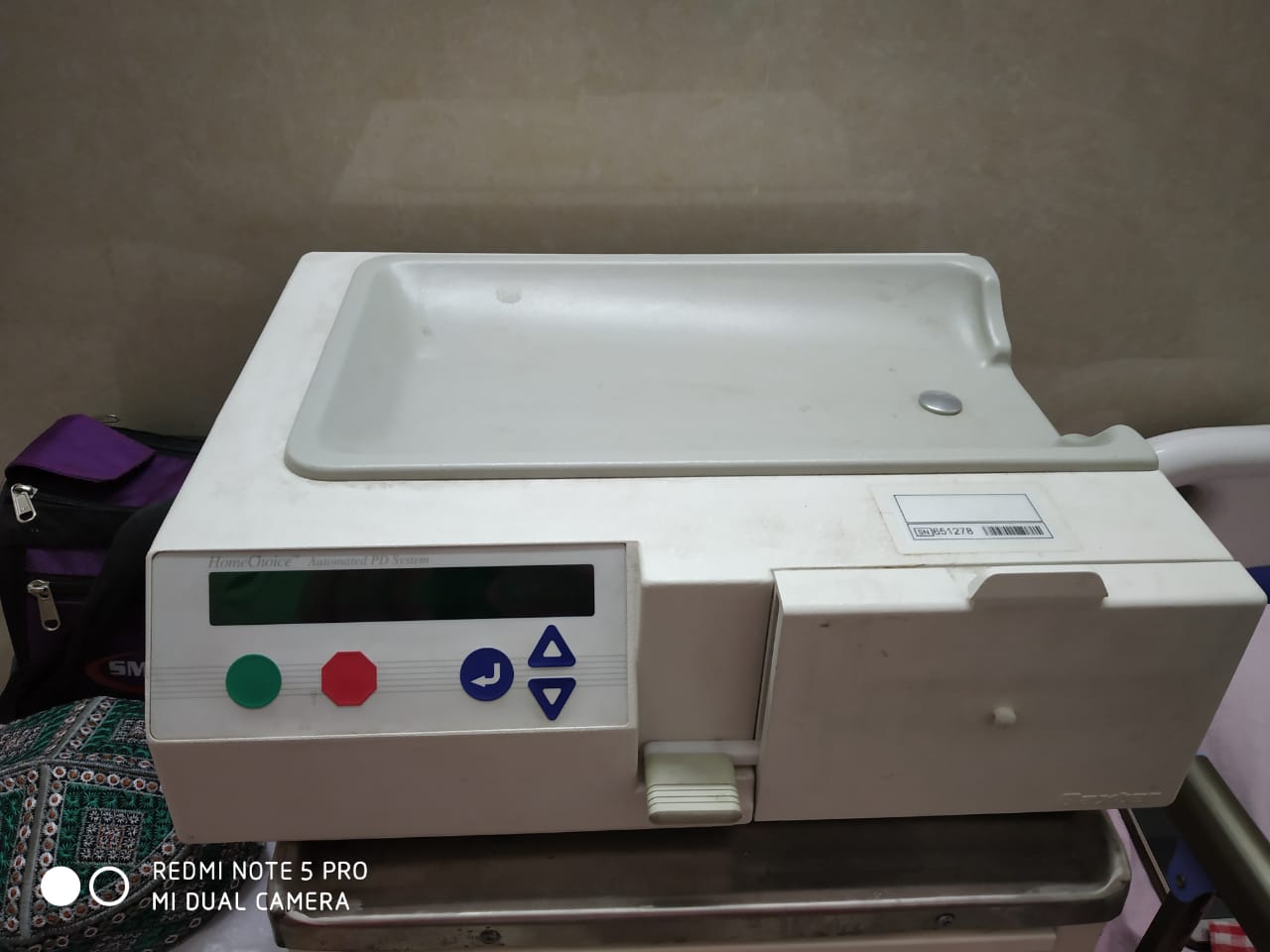
Peritoneal dialysis – advantages
- HD needs to be done in a dialysis centre or Hospital, but PD can be done at home thus giving greater life style flexibility and convenience.
- No need of repeated puncturing of your body in case of PD.
- PD is better tolerated in patients with Cardiac diseases. Less risk of fall in blood pressure than HD.
- PD patients might retain residual kidney function than HD.
- For moribund patients, PD is a better option.
Hemodialysis – advantages
- HD has better efficiency in removal of waste products and excess water especially in more critical patients.
- Dialysis technicians will be carrying out the entire procedure, no need of individual expertise.
- Less risk of infections if you have a permanent access.
- HD has slightly better economical advantage especially in developing counties like India.
- Different modalities of HD are available which gives better clearance of toxic substances accumulating in kidney failure. (eg: High Flux dialysis)
Answer is NO. Dialysis is just a procedure that does some of the functions a normal kidney will do. If patient has End stage Kidney disease (ESKD), dialysis should be continued lifelong unless planning for a kidney transplant.
Most of the patients can lead a near normal life on Dialysis if you take care of diet, access and other comorbidities especially Diabetes and Hypertension. You are able to do mild to moderate physical activity, but if your job requires heavy labor like weight lifting, you have to change your job. Patients are able to travel, provided they are able to continue Dialysis.
- High protein diet should be taken which can be attained by taking more non vegetarian foods that have high protein content.
- Salt and water should be restricted which helps in maintaining blood pressure and prevent excessive fluid accumulating in the body.
- Fruits should be avoided in patients especially those who have high potassium in blood.
- Apple, Papaya or Pine apple are fruits that have less potassium levels which can be taken in moderate quantities.
- Well functioning access either AV fistula or AV graft is the heart of any dialysis programme and helps in patient well being.
- Weight bearing to be avoided in limbs with Fistula.
- Blood pressure measurement and blood drawing should be avoided in fistula arm.
- Don’t apply pressure over fistula arm especially during sleeping.
